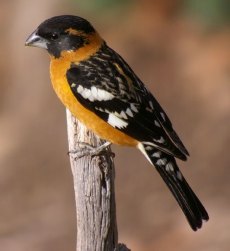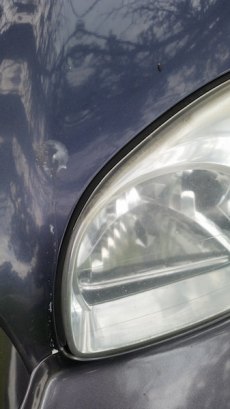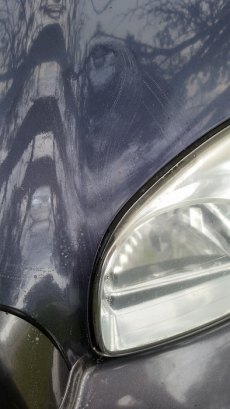One Bird, Two Birds, Chirping Birds, Yard Birds

Autumn is a magical time of year when the temperature drops, the insects thin out, pumpkins are carved, and everyone breathes a huge sigh of relief after another busy, successful summer winds down. Oh, and there’s also kind of a major natural event occurring over the next couple months: a huge bird migration! And the birds love the Outer Banks!
As we see changes in our surroundings, we’ll also be hearing new bird songs, and if we look closely enough, we’ll get the opportunity to see some birds stop by to rest while they continue south, while others move north. Many of the birds we’re about to see come from Canada and way up north in the US, and make their way to parts of South America for the winter. Others breed all over North America, and make their way to Canada for the winter months. That’s a lot of flapping and fluttering!

Since there’s so much movement going on it’s good to know how to prevent birds from flying into your windows. I know many folks who put bird stickers on their house’s windows, which help to keep the birds from flying too closely. If a bird does fly into a window, it’ll probably be stunned. Check to see if the bird is breathing and if his/her eyes are moving and, if so, just wait a few moments for the bird to shake it off. If, after a few minutes, the bird isn’t responding or moving take him or her to the Wildlife Rehabilitation Center on Jackson Circle. Now that the serious stuff is out of the way, let’s meet some of our yard/songbirds!

The American Robin and Eastern Bluebird (Family Muscicapidae, Subfamily Turdinae; Thrushes) are fantastic singers who are common around these parts. These birds are also about to be on the move. The American Robin will set up nest in Canada and points north in the US for the winter, while the Eastern Bluebird will head to the tropics. Both Thrushes enjoy eating a wide variety of food sources from snails and worms to insects, nectars, and berries. Both birds will begin heading back this-a-way in the spring.

If you explore the Hammock Hills Nature Trail or Springer’s Point (or places which are similar) you may be able to spot a species of bird called a Vireo (Family Vireonidae). Vireos are plainly colored birds that prefer to live in forests and/or thickets, eating insects in the foliage for food. Their nests are suspended from tree branches, and while you’d have to exercise an extreme amount of patience to see one of these birds away from its nest, you’ll no doubt hear their persistent singing.

When you head outside and hear a buzzing sound, it may not be chorus of insects. It could be a Warbler (Family Emberizidae, Subfamily Parulinae; Wood Warblers)! Warblers are known for their colorful plumage, however during the fall and winter their vibrant colors are dulled until the following spring and summer. There are fifty-two species of Warblers that breed in the US, and living along the Outer Banks can afford you the opportunity to see a few different types. The Northern Parula, Yellow Warbler, Yellow-rumped Warbler, and Common Yellowthroat, and Yellow-throated Warbler are just a few of the commonly seen Warblers in this area. But trust me, there are like six more types of Warblers that can be spotted during the spring, summer, and fall migration periods. And they like to eat insects. A lot of them.
The State Bird of North Carolina (Northern Cardinal) and Grosbeaks (Family Emberizidae, Subfamily Cardinalinae; Grosbeaks, Cardinals, and Allies) will be fluttering around this fall and winter. The birds in this family have uniquely shaped “conical bills” that allow them to crush seeds and snack on flowers. These birds rarely eat insects, yet the babies are fed insects by the parent birds. While some of the birds in this bird family do migrate, many are year-round inhabitants and can be extremely territorial. These birds are brilliantly colored, but don’t let their beauty fool you. They can be aggressive and will mark out their territory through song.
As these birds travel up and down the coast and over continents, they’re going to leave us with more than just pleasant songs and pretty sights. They’re going to poop on our vehicles, and probably a lot. After eating bugs, berries, flowers, and seeds, there’s a pretty strong chance your vehicle is going to be splattered with an array of textures and colors. But don’t get mad at our feathered friends! Just find a pair of panty-hose! And a bucket filled with water and soap, of course. When I was kid and washed my parents’ vehicles, Dad would ask that I use panty-hose to remove the bird poop from the paint. He told me panty-hose helped prevent the berries and seeds, etc. from scratching the vehicles and quickly removed said bird poo! So I decided to prove to you this works by intentionally parking my vehicle in a bird-poop zone so I could wash it off using the nylons!
There wasn’t any bird poo of epic proportions, but I hope the pictures will do nonetheless.





See? Now you don’t have to fret when a bird uses your vehicle as his or her toilet. Woo hoo!
Welcome to autumn everyone! And happy birding!
PS: Results not typical.
PPS: My Hyundai is still a Hyundai.




